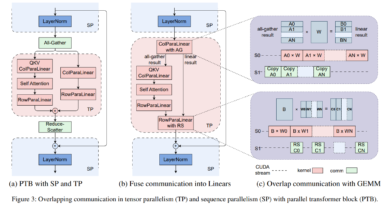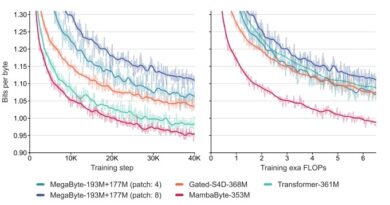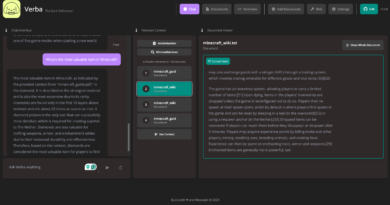Repurposing LLMs: Unlocking the Power of Language Models for Time Series Forecasting
The field of time series forecasting is constantly evolving, with researchers and practitioners continuously seeking innovative approaches to improve the accuracy and efficiency of predictive models. One such groundbreaking framework that has emerged is Time-LLM. Developed through a collaboration between Monash University and Ant Group, Time-LLM reprograms Large Language Models (LLMs) to enable general time series forecasting while preserving the backbone language models intact. In this article, we will explore the key concepts and methodologies behind Time-LLM and delve into its implications for the future of time series forecasting.
🔥Explore 3500+ AI Tools and 2000+ GPTs at AI Toolhouse
Introduction to Time-LLM
Traditional time series forecasting models often require substantial domain knowledge and extensive amounts of data to make accurate predictions. However, Time-LLM takes a different approach by repurposing LLMs, which are traditionally used in natural language processing tasks, to forecast time series data. By leveraging the inherent pattern recognition and reasoning capabilities of LLMs, Time-LLM offers a versatile and efficient solution to the forecasting problem.
At the core of Time-LLM lies an innovative reprogramming technique known as Prompt-as-Prefix (PaP). This technique translates time series data into text prototypes, bridging the gap between numerical data and the textual understanding of LLMs. By enriching the input with contextual cues, PaP enables the model to accurately interpret and forecast time series data.
The Methodology Behind Time-LLM
The methodology employed by Time-LLM is both intricate and ingenious. Let’s explore the key steps involved:
- Segmentation of Time Series Data: The input time series data is segmented into discrete patches, allowing for a more detailed analysis of individual segments. This segmentation helps in applying learned text prototypes to each segment, transforming them into a format that LLMs can comprehend.
- Reprogramming Language Models: By reprogramming the language models, Time-LLM ensures that the vast knowledge embedded in LLMs is effectively utilized for time series forecasting. The reprogramming process enables the models to draw insights from time series data as if it were natural language.
- Task-Specific Prompts: Adding task-specific prompts further enhances Time-LLM’s forecasting capabilities. These prompts provide a clear directive for transforming the reprogrammed input, enabling the model to make nuanced predictions.
Advantages of Time-LLM
Empirical evaluations of Time-LLM have demonstrated its superiority over existing forecasting models, highlighting its numerous advantages. Some of the key advantages include:
- Generalizability: Time-LLM offers exceptional performance across various benchmarks, showcasing its ability to adapt to diverse time series data and complex forecasting tasks.
- Few-Shot and Zero-Shot Learning: Time-LLM outperforms specialized forecasting models in both few-shot and zero-shot learning scenarios. This means that the framework can make precise predictions even with minimal data input, a feat that traditional models often struggle to achieve.
- Efficiency: By repurposing LLMs, Time-LLM eliminates the need for extensive domain-specific data and reduces the computational resources required for training specialized models. This results in improved efficiency and faster forecasting.
The Implications of Time-LLM
The success of Time-LLM extends beyond time series forecasting and has significant implications for the field of data analysis as a whole. By demonstrating the effectiveness of repurposing LLMs for tasks outside their original domain, Time-LLM opens up new avenues for applying language models in various data analysis contexts.
The reasoning and pattern recognition capabilities of LLMs can be leveraged to tackle a wide range of data analysis problems, providing researchers and practitioners with powerful tools for extracting insights and making informed decisions.
The Future of Time Series Forecasting
Time-LLM represents a significant leap forward in the field of data analysis. Its ability to overcome the limitations of traditional forecasting models, its efficiency, and its adaptability position it as a groundbreaking tool for future research and applications.
Frameworks like Time-LLM are vital for shaping the next generation of analytical tools. They offer versatility, power, and the ability to navigate complex data-driven decision-making scenarios. As researchers continue to explore the potential of language models and reprogramming techniques, we can expect further advancements in time series forecasting and other data analysis tasks.
In conclusion, Time-LLM stands as a testament to the power of repurposing language models for time series forecasting. By harnessing the capabilities of LLMs and bridging the gap between numerical data and natural language understanding, Time-LLM opens up new possibilities for accurate and efficient forecasting. As the field progresses, we can anticipate further breakthroughs in leveraging language models for data analysis, leading to more advanced and effective forecasting techniques.
Check out the Paper and Github. All credit for this research goes to the researchers of this project. Also, don’t forget to follow us on LinkedIn. Do join our active AI community on Discord.
If you like our work, you will love our Newsletter 📰




